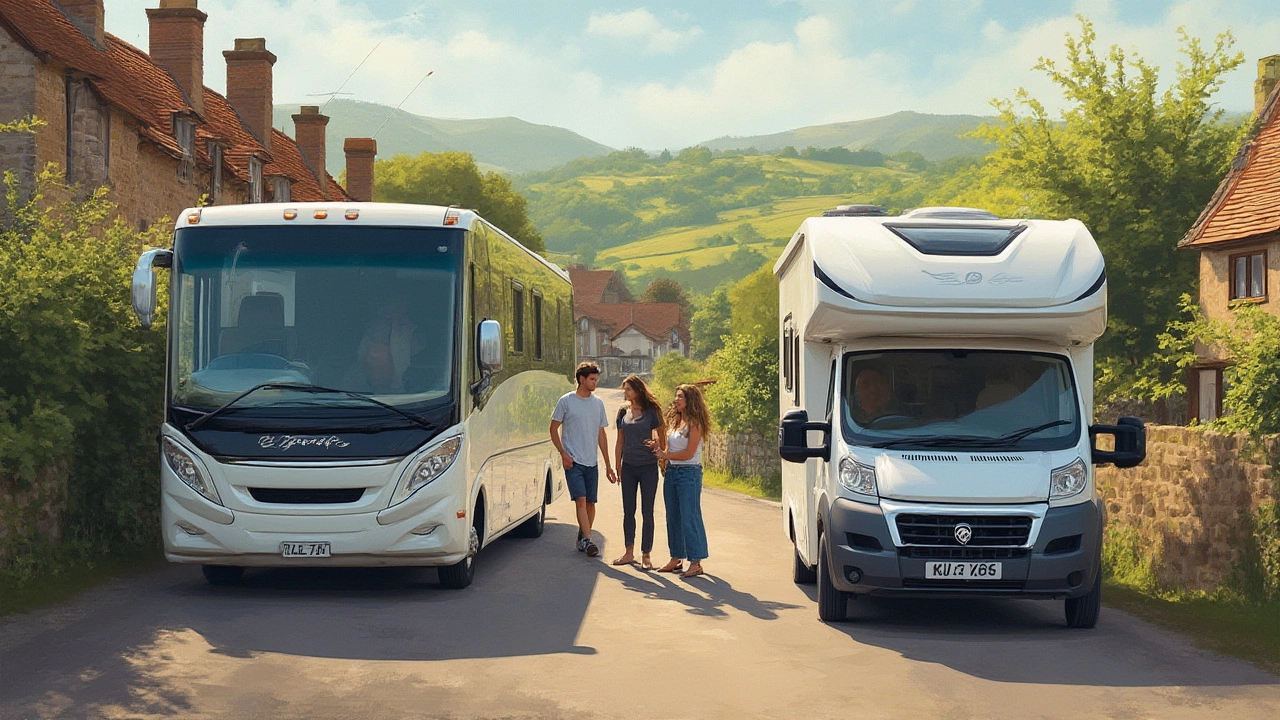Class A Motorhome: The Ultimate Guide for UK Adventurers
Ever wondered why Class A motorhomes get all the buzz? They’re the big, boxy rigs that feel like a tiny house on wheels. With standing height, full kitchen and comfy beds, they make long trips feel like a hotel on the road.
What Makes a Class A Motorhome Special?
A Class A is built on a bus chassis, so it’s longer and taller than most vans. That means you get a full‑size bathroom, a proper fridge, and even a separate lounge area. The big windscreen gives great visibility, and many models have a slide‑out bedroom for extra space.
Because of the size, you’ll notice smoother rides on highways and more storage for gear. It’s perfect for families, pet owners or anyone who wants a home‑like feel without setting up a tent.
How to Choose and Hire the Right One
Start by deciding how many people will travel. Most Class A rigs sleep 4‑6, so pick one that fits your crew comfortably. Check the kitchen layout – you’ll spend a lot of time cooking, so a full stove and freezer are worth it.
Look at mileage limits. Some hires charge extra if you go over a set number of miles per week. If you plan a coast‑to‑coast adventure, choose a deal with higher limits or unlimited miles.Don’t forget insurance. Basic cover is usually included, but you may want comprehensive policy that covers roadside assistance and personal belongings. Make sure you have a full UK driving licence; most companies require a category B licence, but some vans need a category C1 if they’re over 3.5 tonnes.
When you pick up the motorhome, ask the provider to walk you through the controls: water tanks, electric hookups, waste disposal and the slide‑out mechanism. A quick demo saves headaches later.
Costs vary by season. Summer rates rise, so if you can travel shoulder‑season, you’ll save a lot. Expect a daily hire price of £120‑£200, plus fuel, campsite fees and any extra mileage charges.
Fuel consumption is higher than a regular car – think 12‑15 mpg on average. Budget for about £1.70 per litre of diesel and plan refuelling stops early, especially in remote areas.
Camping sites that accept Class A rigs often have powered hookups, waste dump stations and easy road access. Look for sites with 50‑amp connections if you want to run the air‑conditioning and TV at the same time.
First‑time drivers should practice in a quiet area before hitting the motorway. Remember the blind spots are bigger, and the turning radius is larger. Use your mirrors, take corners wide and give yourself extra stopping distance.
Finally, enjoy the freedom. With a Class A you can wake up by a lake, cook breakfast in a fully stocked kitchen and drive on to the next stunning view – all without packing and unpacking a tent. Ready to book? Browse our Class A listings and start planning your next road‑trip adventure today.
Class A vs Class C Motorhome: Choosing the Best RV for Your Adventures
Get the real scoop on Class A vs Class C motorhomes. Compare size, comfort, costs, and travel routines so you can find your perfect home-on-wheels.
